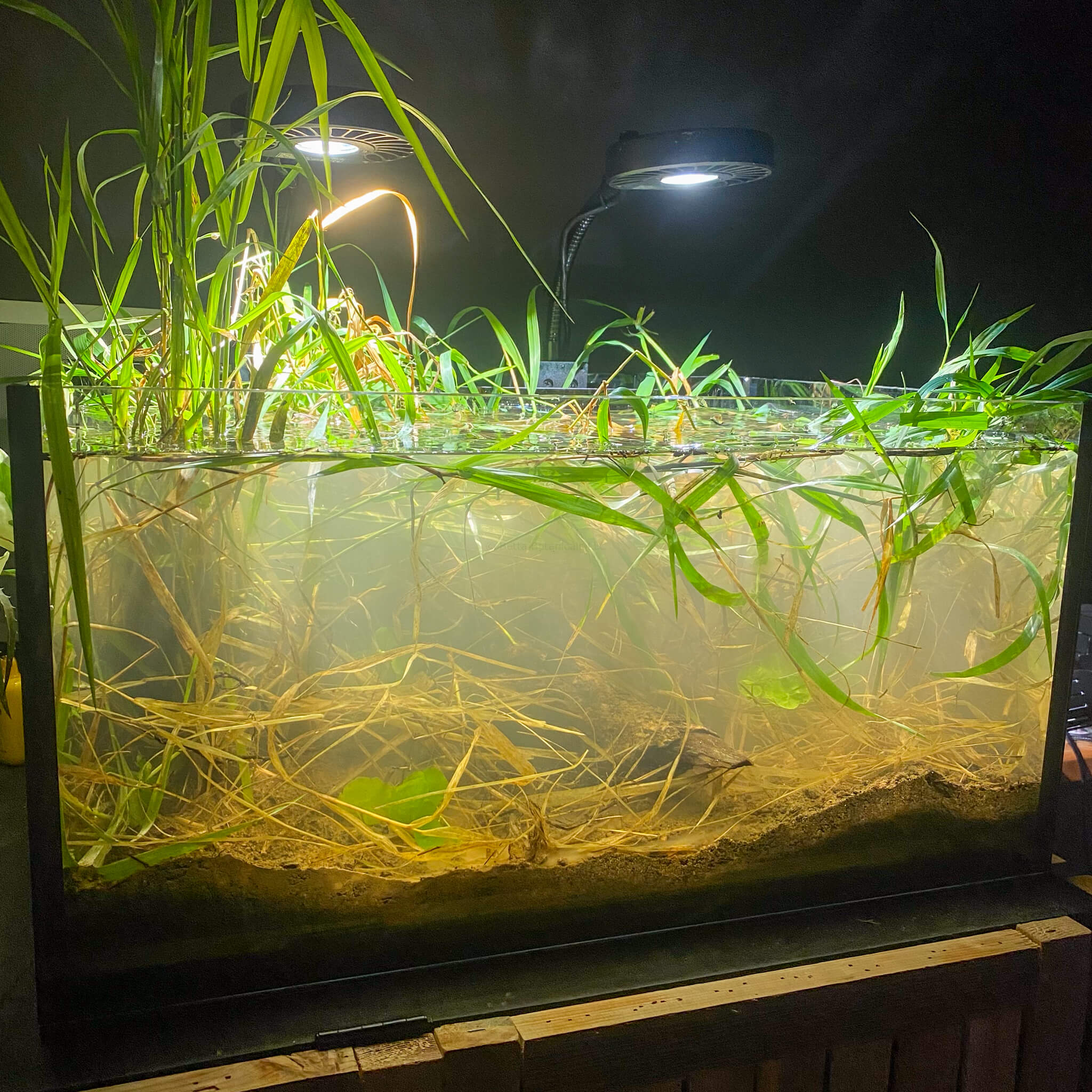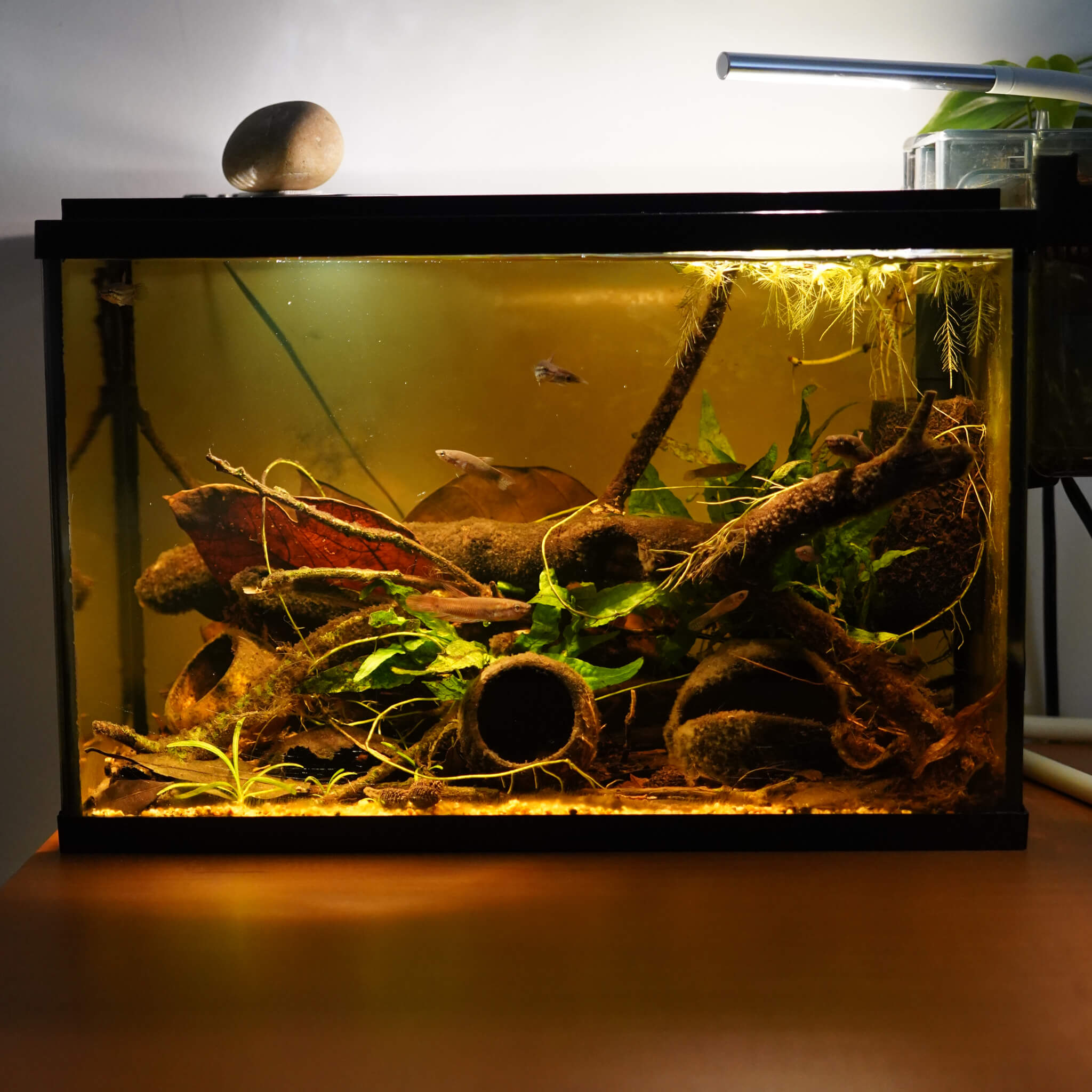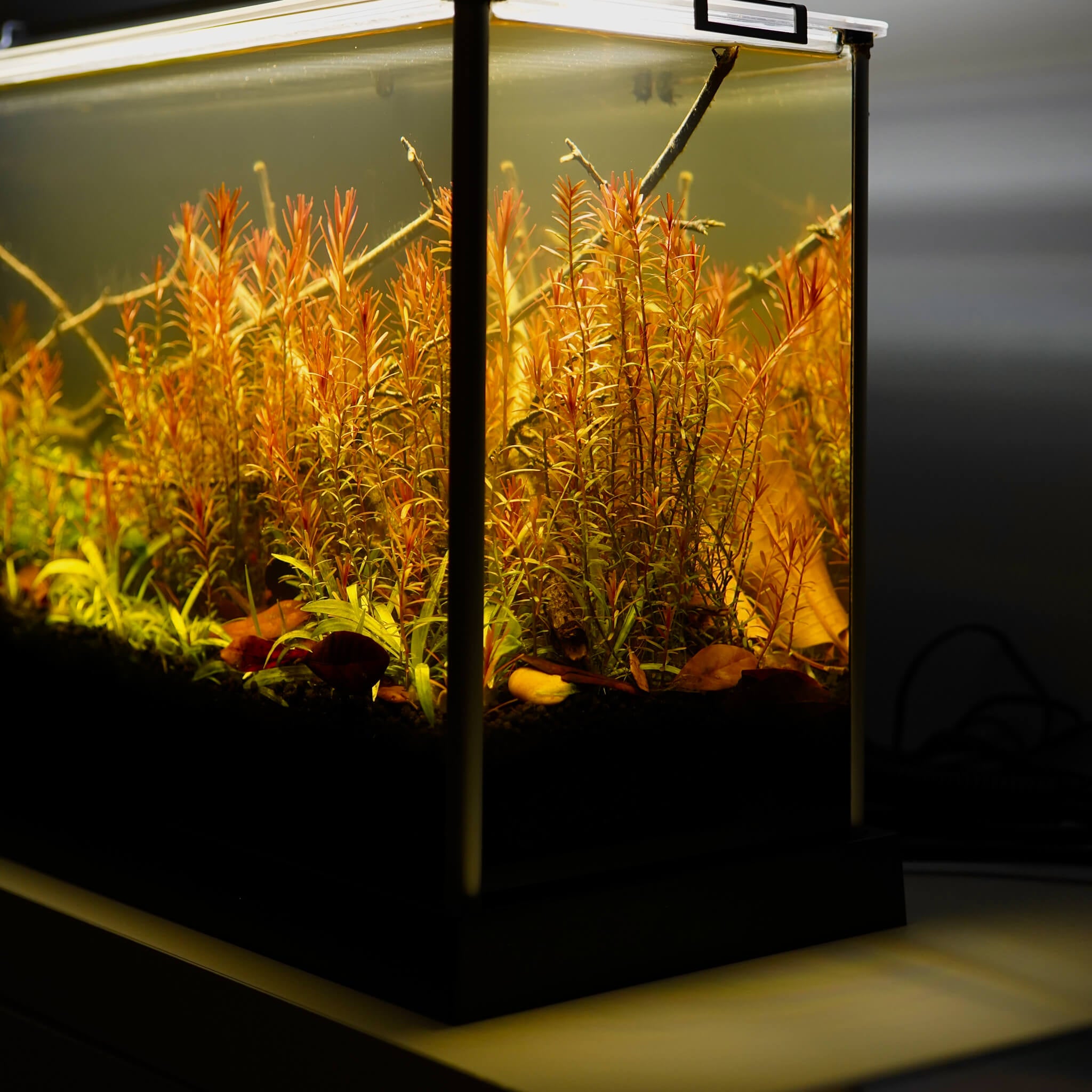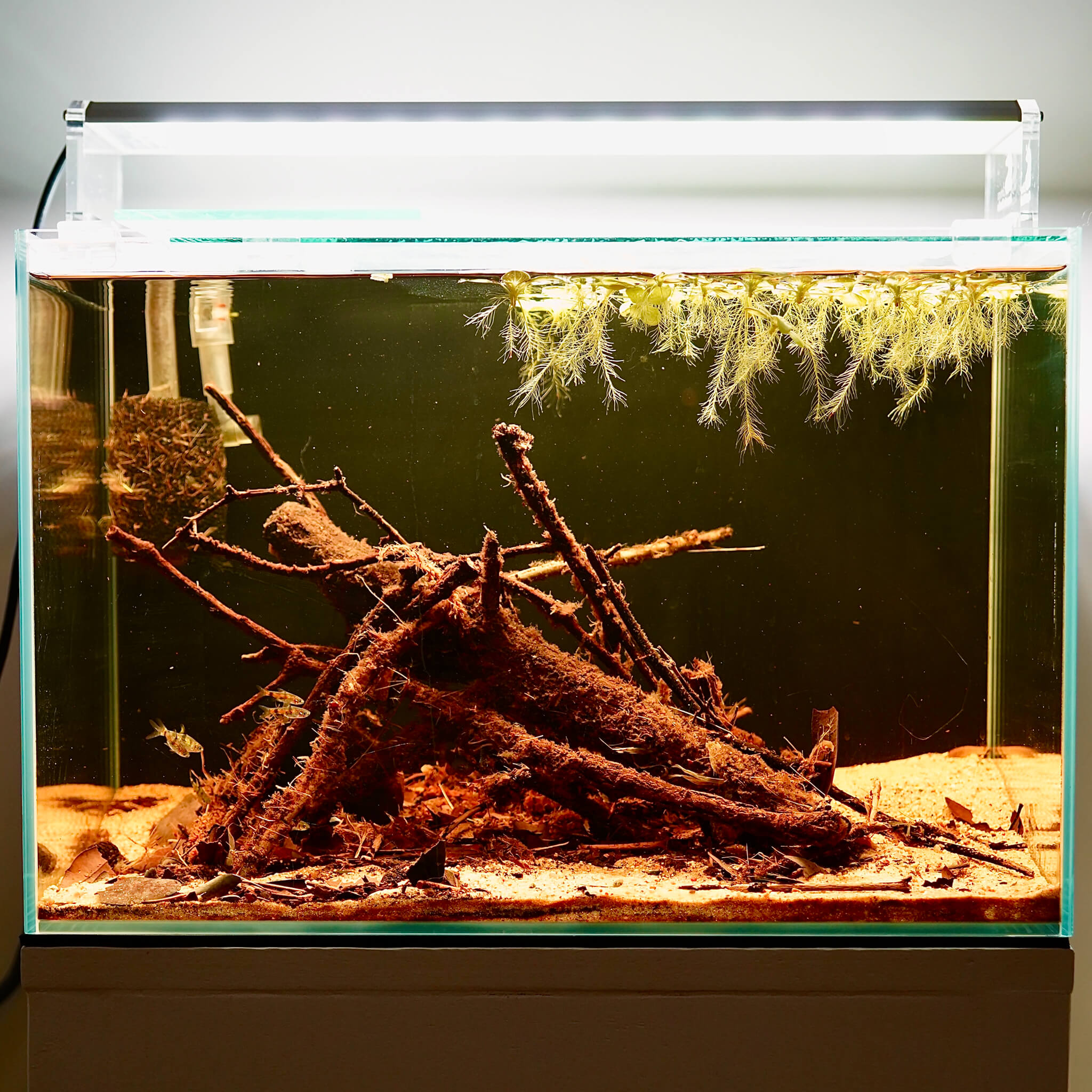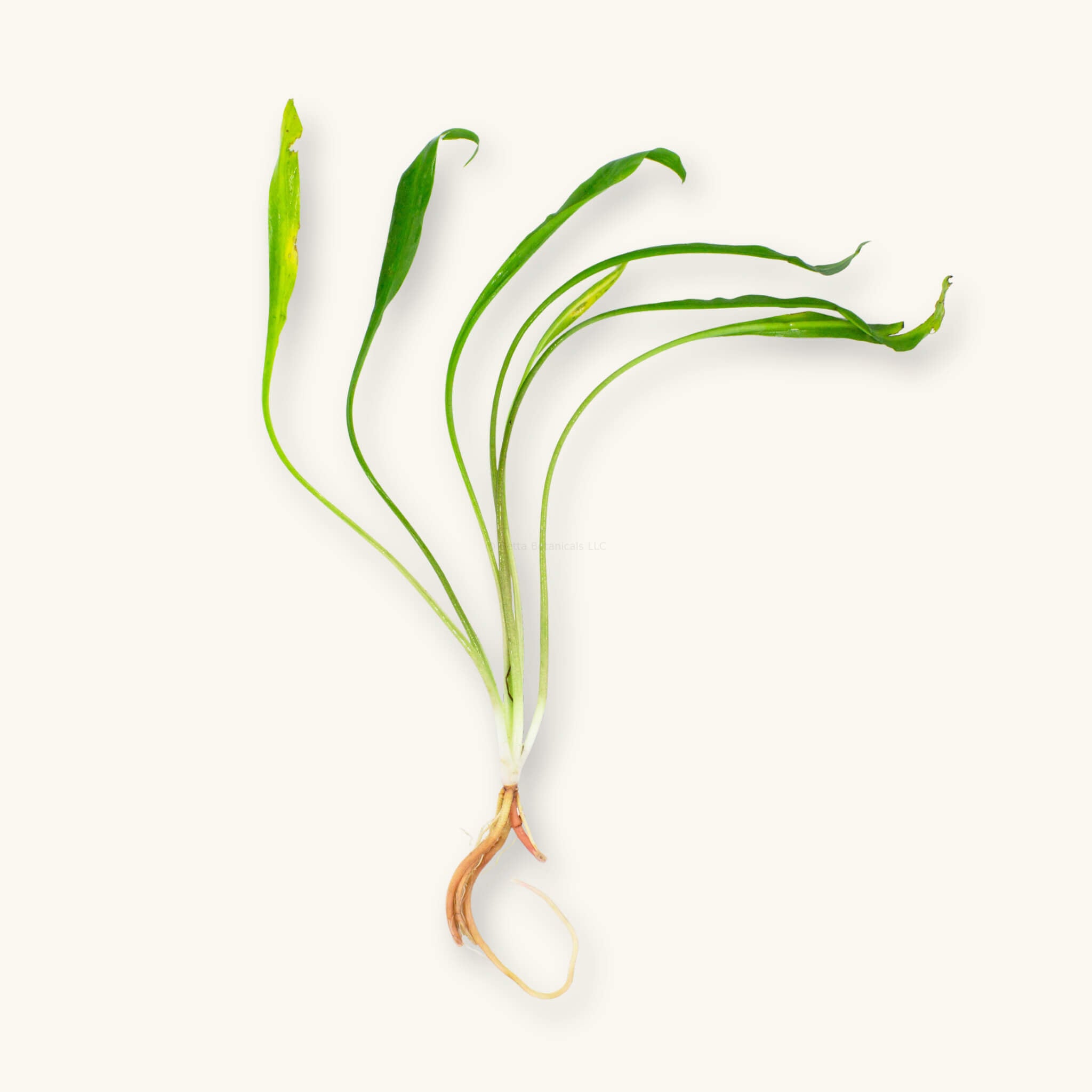
Cryptocoryne Costata
Cryptocoryne costata
Scientific Name: Cryptocoryne costata
Common Name: Crypt Costata
Cryptocoryne costata is a slow-growing crypt in the aquarium hobby, and it has bright green leaves that contrast nicely with the tinted water of a botanical method, blackwater, or biotope aquarium. Its long, slender leaves can vary from bright green to bronze-red depending on lighting and nutrient availability. This blackwater aquarium plant grows slowly but steadily, making it an excellent choice for aquarists who don't want to be constantly pruning plants.
Like other crypts, costata spreads by runners beneath the substrate, forming small colonies over time. Once planted, it appreciates stable water parameters and should not be uprooted or disturbed. A nutrient-rich substrate or root tabs will support its growth, especially in inert sand setups. Its upright growth makes it well-suited to the midground, where its narrow leaves sway in gentle currents among leaf litter and botanicals.
When first introduced, costata may experience the classic “crypt melt,” losing its emersed leaves before producing new submerged foliage. This is normal and temporary—patience is rewarded as the plant acclimates to the aquarium environment.
Caring for Cryptocoryne costata in Blackwater Aquariums
Care Level: Easy
Light Requirements: Low; higher light may bring bronze-red coloration
CO₂: Not required
Growth Rate: Slow
Tint Tolerance: Accepts low–medium tannin levels
Native Habitat: Southeast Asia; often found in shaded streams and forest pools
All Plants may contain snails or snail eggs. We keep them in all of our tanks for the benefits they provide. Our blackwater aquarium plants are provided by H2OPlants in adherence to their Shipping and DOA Policies. Your curated selection will arrive in their packaging separate from your botanical & merch orders.

Cryptocoryne Costata
contrast the tint with greenery
While the aesthetic appeal of tinted waters can be quite attractive to us, the recreation of nature—which includes both submerged and emersed plants—is the end goal. Flora helps to improve water conditions, feeding patterns, spawning displays, and territory building.
Aquatic Plant FAQs
DOA Policy
Please ensure that you add a heat pack or cold pack to your orders if temperatures in your area are above 90°F or below 40°F. Click for more info on our DOA Policy.
Are these plants duckweed and snail free?
All Plants may contain snails or snail eggs, small macroinvertebrates, and duckweed. We keep them in all of our tanks for the benefits they provide. We have experienced the presence of small snails, ostracods, daphnia, and beneficial detritus worms.
Are your plants only for tinted water conditions?
Nope! All of our plants will grow perfectly in untinted aquariums that have CO2 and aquasoils, or low-tech planted aquariums. Our selection, though, is optimized for emersed plant growth and low- to medium-tinted water environments.
What is your aquatic plant shipping schedule?
We’re a small company and ship Tuesdays & Thursdays only. Orders placed Wednesday–Sunday → Ship Tuesday. Orders placed Monday–Tuesday → Ship Thursday
Are your plants just for bettas?
Nope. Our aquatic plants are safe for almost all aquariums, terrariums, vivariums, and paludariums. Many of our plants can be grown emersed in filter compartments, vivariums, or incorporated into wabikua.
What are Tannins?
Tannins are natural compounds released by leaves, seed pods, and bark as they decompose in water. They soften water, gently lower pH, and create the characteristic tea-stained tint found in blackwater habitats. But their role goes far beyond color—tannins fuel beneficial bacteria, fungi, and biofilms, which form the foundation of a healthy ecosystem. They also offer mild antifungal benefits and help reduce stress in fish by replicating the natural conditions they’ve evolved in. At their core, tannins are plant-derived antioxidants that connect your aquarium to the same processes at work in wild flooded forests and streams.




